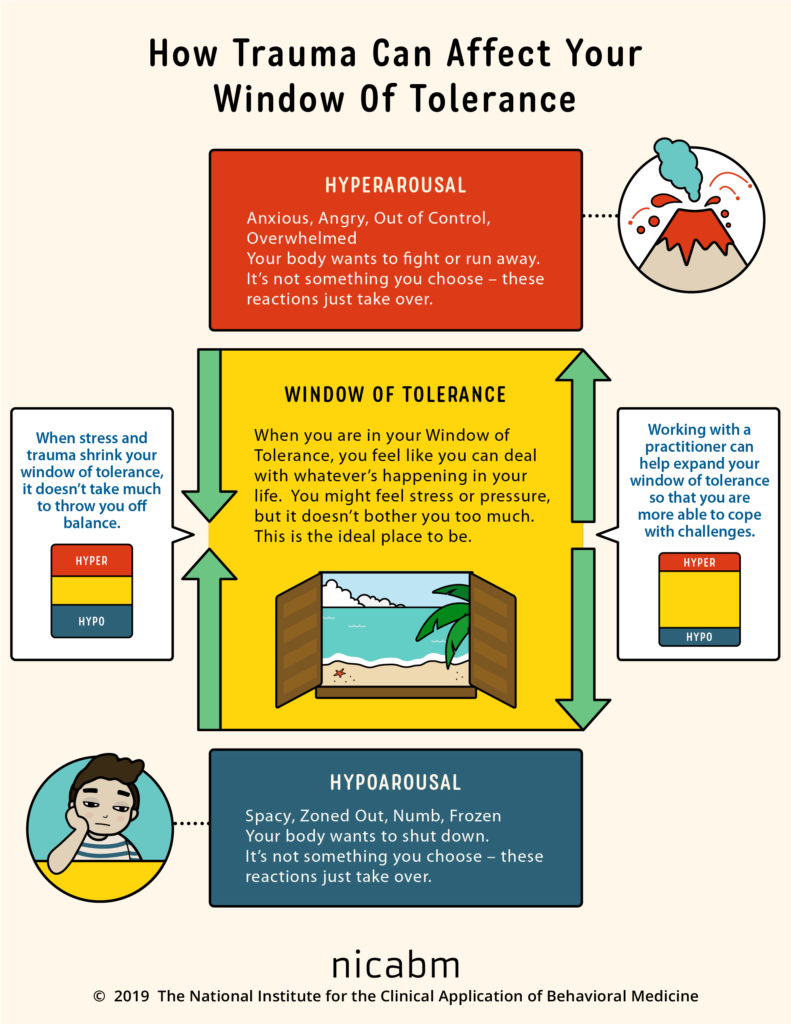Imagine that memories of much of your personal experiences are marked by uncontrollable feelings. When we’re in hyperactive or hypoactive states, we’re talking about situations where we’re outside our tolerance window. When we are within these tolerance limits, it is easier to function optimally and live with well-being.
But what exactly is this window? The tolerance window represents the extremes of the emotional intensity scale that each of us is able to handle to function properly, living in this window, within these limits, people can feel safer and learn to enjoy life better.
- Sometimes emotions overflow for several different reasons: mistrust.
- Lack of strategies to manage emotions.
- Inability to think.
- Denial of the need to feel.
- The two limits of the tolerance window correspond to the two extreme states of optimal activation of the organism:.
People mold themselves to feel life one way or another from experiences. For a variety of reasons, some people become reactive, such as experiencing panic attacks or anger. At the opposite end, there would be people who are disconnected from their bodies. or mind, think moving slowly and with difficulty even moving.
In the face of danger situations or traumatic situations, the body acts to survive by using various mechanisms, in some cases these mechanisms do not return to their normal state, usually people outside their tolerance window are the ones who have had to do so. They act in the face of this difficult situation, which in turn has changed their basic state. What should bring safety and relaxation brings anxiety or, on the contrary, apathy.
“It doesn’t matter what they did to us, it’s what we do with what they did to us. “Jean Paul Sartre.
Neuropsychological research has already shown that in these cases, the only way to change the way we feel is to become aware of our inner world, respect and learn to live with our emotions. The practice of conscious or conscious care?It calms the nerves system and helps us recognize our emotions so that we can also control them more effectively.
Teachers like Pat Ogden and Peter Levine have developed body therapies that can also help, are psychotherapies that involve psychomotority and somatic experimentation to restore normal body function. In this therapeutic line of Peter Levine, the story of the person is in the Background, are the physical sensations caused by the history that are explored. It is a process of carefully entering and leaving internal sensations and traumatic memories. This process is called the pendulum process? And it helps gradually expand the tolerance window.
Opening the window of tolerance can help us feel calmer and more focused on the present moment, enjoying new experiences without feeling so overwhelmed in certain situations that previously caused us such a feeling, in this sense, several strategies can help:
The limits of our tolerance window are in line with the concepts developed by Siegel (Cfr. , Simon, 2011), and are linked to the practice of mindfulness that allows us to remain precisely within these limits. Mindfulness develops the prefrontal structures of the brain, which are responsible for modulating emotions and maintaining emotional balance. The practice of regulating emotions involves these seven steps, the order and number of which can be changed:
“Does mental awareness allow us to direct the flow of energy and information towards integration?And this means that the disease is absent and well-being appears. -Siegel-
Our attachment history also has a big influence on the breadth of our tolerance window, which can be seen in our personal care actions. Positive self-management can be seen as one that involves mental attitudes or states in which the person accepts, acts and leaves room for growth and personal development, so living in our window of tolerance allows us to live a pleasant, committed and meaningful life, extending the limits of this window allows us to continue with this feeling even in the most difficult moments of life.

